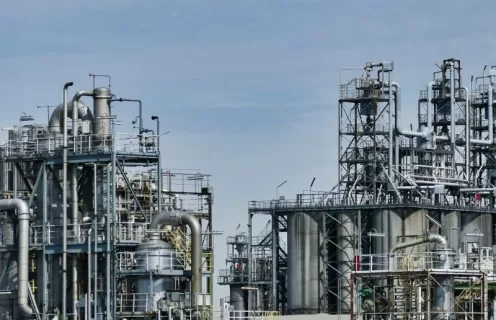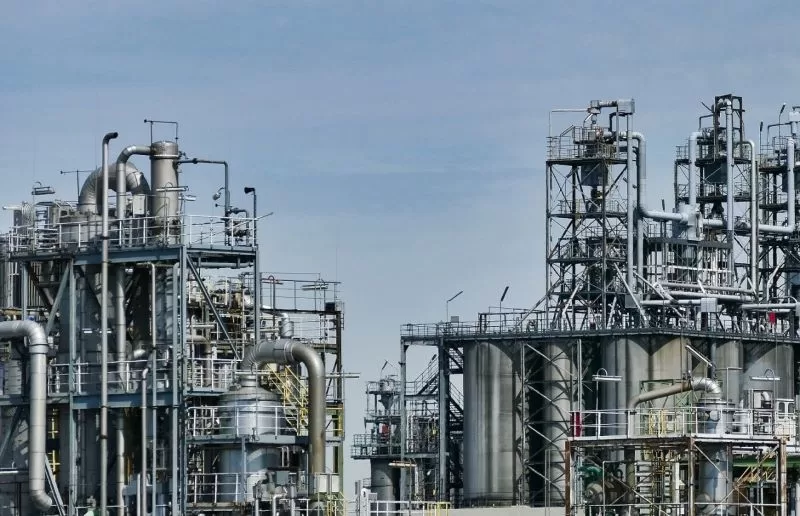What happens to the minerals or ore after being extracted in mines? The simple answer is that they go through a process to separate elements from ores. High Pressure Acid Leach, or HPAL is a procedure that extracts precious metals from mined solids.
At last, Indonesia is finally dipping its toes into this smelter technology to process nickel ore and turn it into mixed hydroxide precipitate. MHP is a precursor material for batteries of electric vehicles.
What We Know About the HPAL Smelter in the NEMIE
This HPAL Neo Energy construction project will introduce Indonesia to a High-Pressure Acid Leaching smelter that utilizes absolute renewable energy. The plant’s projected production capacity is 120,000 metric tons of MHP or mixed hydroxide precipitate for the province of Central Sulawesi per year.

High-Pressure Acid Leaching (HPAL) Neo Energy Project (Photo credits: https://indonesiaminer.com/)
This is part of the massive 16 strategic projects that include five nickel processing facilities in the province of Sulawesi, worth almost US$40 billion. It also includes the US$11.83 billion offshore gas project by Eni, an Italian energy group, in the Makassar Strait, which is in between the islands of Sulawesi and Borneo.
Former Indonesian President Joko Widodo had been pushing to leverage the country’s nickel production and reserves, which are the largest in the world, to attract investment from other countries. Foreign stakes will definitely boost Indonesia’s position in EV battery production’s supply chain globally.
Fortunately, the current president, Prabowo Subianto, who took over the position in October, has expressed his support for continuing the former’s goal.
Groundbreaking Ceremony
On September 14, 2024, PT Anugrah Neo Energy Materials (ANEM) facilitated the groundbreaking ceremony of the Indonesia HPAL Project. No less than the Central Sulawesi Governor Rudy Mastura attended the event.

Groundbreaking of HPAL Neo Energy Project (Photo credits: https://neoenergy.co.id/)
The honorable official shared that the presence of the industrial area in Morowali is a giant leap forward for the region in terms of sustainable industrial development. He further added that such all-important momentum has a major impact on the region’s economy and industry as a nation.
Other notable guests in the ceremony include the following:
- Airlangga Hartarto – Coordinating Minister, Economic Affairs
- Maruli Simanjuntak M.Sc – Chief of Staff, Indonesian Army
Minister Hatarto shared that the government will pour its support into the project by expediting any required permits, including those needed to secure financing and providing help with land clearing. He further added that the HPAL Smelter nickel processing could be a huge help to the government’s priority programs in the same energy and downstream industry, as well as food security.
Concerns About High-Pressure Acid Leaching (HPAL) Technology
Despite HPAL being a proven technology, Indonesia used to be on the fence about trying it before. This is because it requires a massive investment and an equally large media for debris disposal. In addition, most HPAL facilities in the world use coal, and the technology releases up to three times the amount of greenhouse gases compared to those emitted by other nickel production that utilizes high-grade sulfide deposits.
With the sure-shot progress that will unfold due to the highly anticipated HPAL facility, the governor is aware of everyone’s environmental concerns. He guarantees there is nothing to worry about. Every venture put out in the facility will be for the betterment and welfare of the area and the people in terms of sustainable energy, environment protection, and economic growth.
Factsheet
Owner/Investor: Anugrah Neo Energy Materials (Indonesia)
Strategic Partner: Gotion Indonesia Materials (China)
Facility Contractor: Zhejiang Huayou Cobalt Co. (China)
Project Name: High-Pressure Acid Leaching (HPAL) Neo Energy Project
Project Type: High-Pressure Acid Leaching (HPAL) plant
Location: Neo Energy Morowali Industrial Estate (NEMIE)
Value: IDR 636.9 Trillion or US$39.58 Billion (Overall total)
Construction Start: Q3 2024
Construction End: Q3 2026

